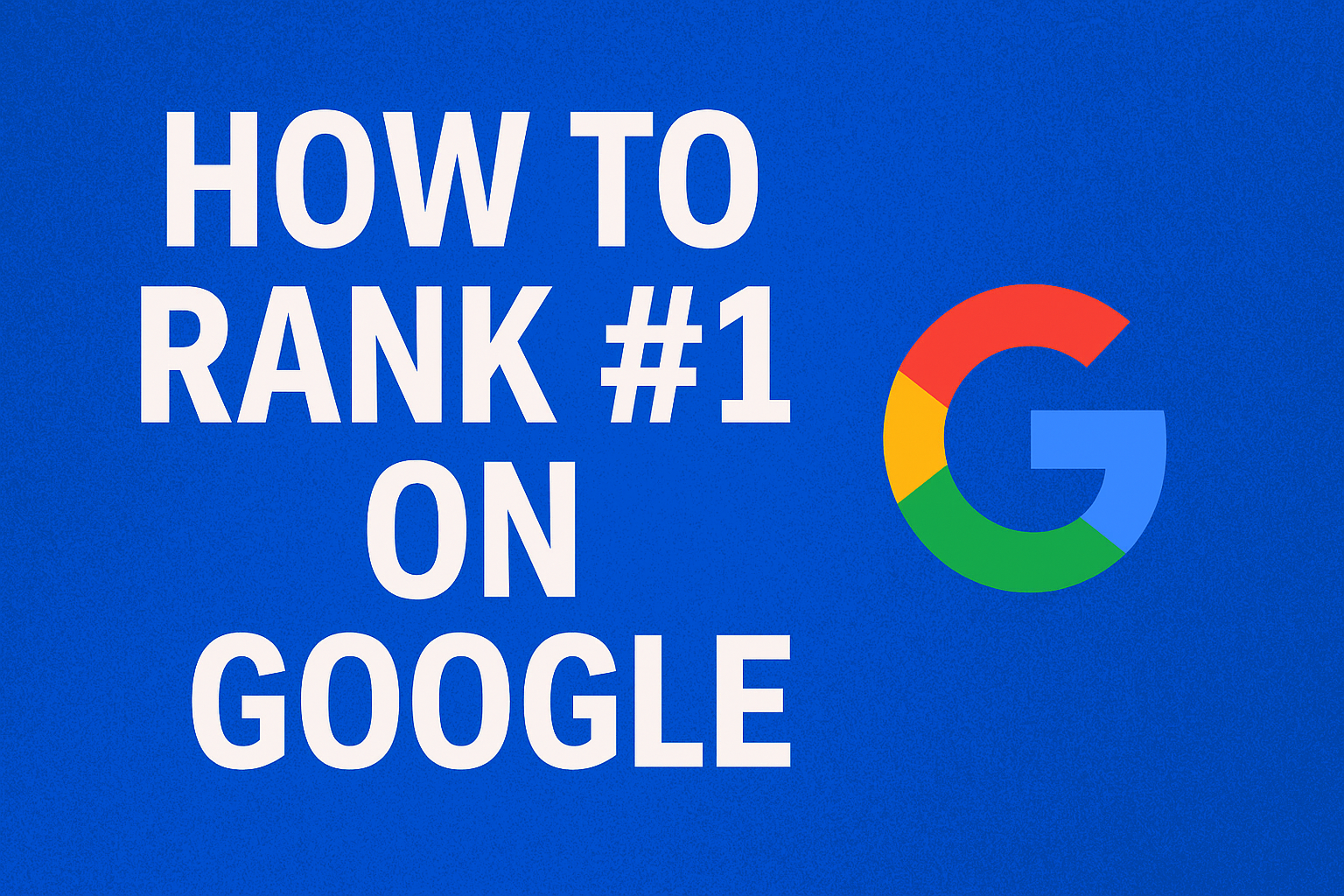How to Get #1 Rank on Google: 8 Proven Strategies


A full Stack web developer with over 5 years of experience
Introduction
Every website owner's dream? Seeing their page at the very top of Google’s search results.
But getting to #1 isn’t about luck — it's a smart mix of strategy, content, technical skills, and patience.
Today, let's break down exactly how you can earn the #1 spot on Google!
🎯 1. Understand Search Intent
Before you create content, ask yourself:
What is the searcher really looking for?
Google’s job is to serve the best answer.
- Informational: Tutorials, guides, facts.
- Navigational: Brand names, product names.
- Transactional: Buy, subscribe, sign up.
Tip: Match your page exactly to the user's real need.
✍️ 2. Create High-Quality, Original Content
Content is still king.
- Deep: Cover topics fully — leave no questions unanswered.
- Fresh: Update regularly to stay current.
- Original: No copying — Google loves unique insights.
- Engaging: Use visuals, stories, and clear formatting (like bullet points) to keep readers hooked.
🔑 3. Focus on Keyword Strategy
- Find the right keywords: Use tools like Ahrefs, SEMrush, or Google Keyword Planner.
- Use keywords smartly: Title, headings (H1, H2s), meta description, and first 100 words.
- Avoid keyword stuffing: Google penalizes unnatural repetition.
🏗️ 4. Optimize On-Page SEO
Small technical improvements = big ranking jumps.
- Title Tags: Include your main keyword naturally.
- Meta Descriptions: Compelling summaries that make people want to click.
- Header Tags (H1, H2, H3): Structure your content clearly.
- Internal Linking: Connect to other related posts on your site.
- Image Optimization: Use ALT tags describing your images.
📱 5. Make Your Site Mobile-Friendly
Over 60% of searches happen on mobile!
- Use responsive design.
- Make sure buttons, text, and navigation are thumb-friendly.
- Test your mobile usability in Google Search Console.
🚀 6. Improve Your Page Speed
Google ranks fast sites higher.
- Compress images without losing quality.
- Minimize CSS and JavaScript files.
- Use caching plugins if you're on WordPress.
Test speed with: PageSpeed Insights
🔗 7. Build High-Quality Backlinks
Backlinks = votes of trust.
- Guest posting on reputable blogs.
- Creating shareable infographics.
- Publishing research studies, original surveys, or detailed guides.
- Building relationships with industry influencers.
More trustworthy backlinks = higher rankings.
📈 8. Track, Analyze, and Adapt
- Use Google Analytics and Google Search Console.
- See which pages perform best.
- Identify what’s working — and double down on it.
- Fix underperforming pages.
SEO is not "set and forget." It’s continuous improvement.
🌟 Conclusion
Reaching #1 on Google takes work — but it’s possible for anyone who’s consistent, strategic, and willing to focus on what users actually need.
By mastering intent, optimizing content, speeding up your site, and earning links, you can climb the rankings — and stay there!
Was this article helpful?